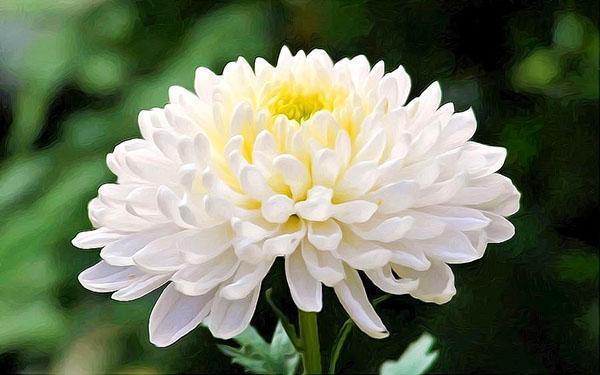Features of growing large-flowered chrysanthemums
 Large-flowered chrysanthemums are heat-loving plants. They are successfully grown in southern countries. In Japan, an annual festival of large-flowered chrysanthemums... In Russia, these flowers are not very common due to the cold climate. Another reason is the complex growing technology. Gardeners buy seedlings of large-flowered chrysanthemums, plant them, and the seedlings give powerful green shoots, and the plants do not have the strength to bloom. At the beginning of May, it is necessary to remove all young growth so that the chrysanthemum can expend nutrients for the formation of buds. Oddly enough, the first bud needs to be cut, thus, you activate the chrysanthemum's defense mechanism, and it will begin to direct nutrients to the rest of the buds. You need to select the largest one, and delete the rest.
Large-flowered chrysanthemums are heat-loving plants. They are successfully grown in southern countries. In Japan, an annual festival of large-flowered chrysanthemums... In Russia, these flowers are not very common due to the cold climate. Another reason is the complex growing technology. Gardeners buy seedlings of large-flowered chrysanthemums, plant them, and the seedlings give powerful green shoots, and the plants do not have the strength to bloom. At the beginning of May, it is necessary to remove all young growth so that the chrysanthemum can expend nutrients for the formation of buds. Oddly enough, the first bud needs to be cut, thus, you activate the chrysanthemum's defense mechanism, and it will begin to direct nutrients to the rest of the buds. You need to select the largest one, and delete the rest.
Chrysanthemum storage
Due to the cold climate, chrysanthemum may not bloom until frost. In this case, the bush must be dug up and transplanted into a pot. To delay the flowering of the chrysanthemum, the room where the flower is stored must be kept at a temperature of 5ABOUTC. At this temperature, the bud will not freeze, but it will not bloom either.
During storage in the cellar, it is absolutely impossible to water the chrysanthemum. If you are afraid that the plant will dry out, put some snow on the soil. In a cool room, it will gradually begin to melt and will moisten the soil, the chrysanthemum bush will not rot.
After the end of the frost, next spring, the chrysanthemum is transplanted from the pot to its original place. Preliminarily, magnesium-containing and potash fertilizers... Chrysanthemums are treated with insecticides during the flowering period.
Why doesn't the large-flowered chrysanthemum bloom?
After the age of three, chrysanthemums bloom worse. There is no clear explanation for this.
Some botanists say that the chrysanthemum bush ages quickly. Toxins accumulate in its roots, and the root system can no longer provide a large ground part with sufficient nutrients.
Others believe that the chrysanthemum secretes natural poisons that prevent other plants from growing near it. However, she herself suffers from an overabundance of these toxic substances. Therefore, she starts up new basal shoots and, thus, moves to a new place. The plant spends a lot of energy on moving, and the chrysanthemum does not have the strength to bloom abundantly.
Therefore, every 2-3 years the large-flowered chrysanthemum bush must be divided. The new plant takes root well and blooms with beautiful large flowers.